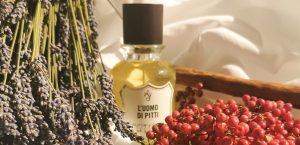When the famous and unsightly inflammations appear on the face and on some parts of the body, we tend to speak indifferently of “acne” or “pimples”. It’s not totally wrong, but it’s good to know that there is a slight difference between these two terms.
The pimple arises from a bacterial infection that affects the skin pore.
In the case of acne, on the other hand, the hair follicles are involved, which become infected and transformed following hormonal stimulation.</span
BUT HOW DOES AN ACNE PIMPLE “BORN”?
It is no coincidence that the disorder is typically distributed in areas rich in sebaceous glands such as the face, chest and shoulders.
Under the skin, pores are connected to sebaceous glands which produce an oily substance known as sebum. The glands and pores are connected by a channel known as a follicle which has a fine hair that grows on the surface of the skin.
During a phase of hormonal imbalance, the receptors of the sebaceous glands absorb more hormones, producing a greater quantity of sebum. When sebum and dead skin cells clump together, they form a plug in the follicle. Inside the closed pore, bacteria in the follicle multiply and cause inflammation, leading to the formation of small inflamed cysts or nodules.
Among the various bacteria, the most representative is this one: Cutibacterium acnes., but other types are also involved, such as staph strains.
In these cases it is necessary to consult specialists, such as gynecologists and dermatologists, to eventually consider a specific and appropriate pharmacological treatment.
Stress, anxiety and sleep quality also greatly affect disease susceptibility and severity. These conditions, in fact, increase the stimulation of the production of cortisol, also called the stress hormone. This affects not only acne, but also less serious ball conditions, such as the appearance of pimples and blackheads.
ACNE, PIMPLES AND FOOD
Another factor that affects this annoying blemish is the wrong food. In fact, scientific studies have proven that a high glycemic index diet stimulates the secretion of androgens (hormones) and causes an increase in the production of sebum.
So, step one: eat a balanced diet. Fruits, vegetables and foods rich in antioxidants fight free radicals and provide essential vitamins for the skin, such as vitamins A, B2, C and E. In addition, salts minerals are important, especially zinc, a micronutrient essential for the development and functioning of human skin, which contributes to the maintenance of normal skin. Unfortunately it is not always easy to take meals in which all the vitamins and minerals that satisfy our daily needs are present at the same time.
TUTTO IN UNO is a food supplement that contains a wide range of vitamins and minerals as well as a protein source based on dry extracts of soy and spirulina. The peculiarity of its active ingredients is that they are at low doses so as to be easily assimilated and not to cause accumulation problems on the liver, thus also promoting better purification of the body and skin.
by CHIARA DUILIO
BIOLOGIST



